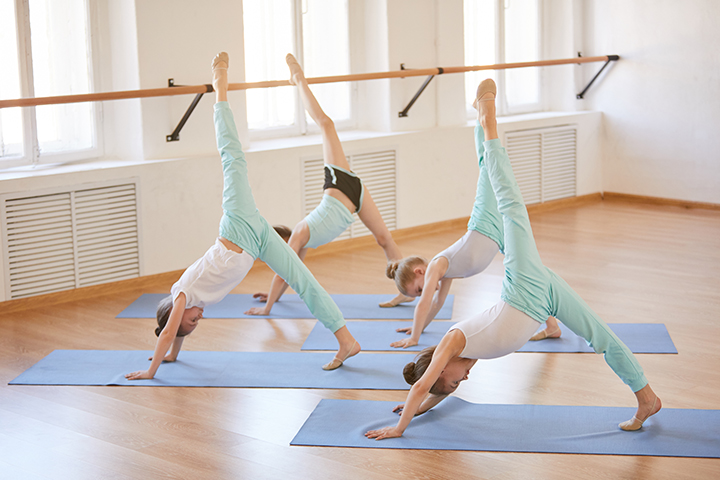It’s a bustling world of school pressures, ceaseless learning, busy parents, video games, and competitive sports. We may not suspect these happenings as stressful for our kids, but often they are. The hurried pace of our children’s lives can have a cumbersome effect on their intrinsic joy—and usually not for the better.
What can possibly be a welcome solution?
Yoga – an ancient practice that gained higher momentum in the past few decades as people began to comprehend the interrelation between physical, emotional and spiritual welfare. Now, with kids also facing numerous apprehensions due to a demanding lifestyle, the practice of yoga is a triumphant remedy that has paved way into school curriculums too.
A simple yoga routine has the capacity to negate the overstimulation children experience nowadays. Yoga at an early age sculpts young minds and bodies, giving tools that will enrich and support children to be balanced, creative, and calm individuals with a strong sense of individuality. It enhances self-esteem, concentration and body awareness; and the ability to deal with life’s challenges smoothly. Physically, yoga improves coordination and it has a powerful effect on brain development, and brings heightened focus.
Yoga and meditation have proven to be particularly beneficial for the physical and emotional health of children aged 6 to 12. It improves balance, strength, endurance, and aerobic capability in children. Yoga and mindfulness offer psychological benefits for children as well. Extensive research has previously shown that yoga can improve focus, memory, academic performance, and classroom behavior, and can even combat anxiety and stress in children.
Yoga can also help children with attention deficit hyperactivity disorder (ADHD) by improving the core symptoms of ADHD, including inattentiveness, hyperactivity, and impulsivity. It can also boost academic performance in children with ADHD. A growing number of schools are thus integrating yoga into physical education programs or classroom curriculums, and educational authorities are ensuring playful and interactive yoga sessions that children are certain to benefit from.
In addition, school-based yoga stimulates mind-body awareness, self-regulation, and physical fitness among kids. Taken together, these factors may lead to improvements in students’ behavior, mental state, health, and performance. That being said, the benefits of school-based yoga also extend to classroom teachers. Recent research suggests that providing educators with training in yoga- and mindfulness-based skills may have several constructive effects for them, including increased calmness, sense of security, positive mood, improvements in classroom management, greater emotional reactivity, and reduced mind and body stress.
Alongside its numberless health benefits, yoga also boosts immunity and prevents attacks from different viruses and bacteria by increasing the levels of antibodies. Yoga promotes blood circulation which can work wonders for the skin, hair and nails. A healthy body feels and looks happy.
In essence, it can be deemed that the practice of yoga helps children to:
- Cultivate a peaceful, relaxed state of body and mind
- Build concentration
- Be imaginative
- Learn responsibility and discipline
- Improve memory
- Brace their self-worth
- Eliminate or diminish their constant use of electronic devices
- Enhance flexibility, balance and posture
- Improve self-control
- Boost immunity and manage weight
- Restore the quality of sleep
Yoga is an age-old art but is pertinent in present times more than ever before. The benefits of yoga are boundless and instrumental. It has multiple gross and fine rewards which can offer a holistic method of life to your child. Gift them the richness of yoga and witness its positivity transform their existence into well-being.
About the author
 SHUNILA JOY CHAUHAN
SHUNILA JOY CHAUHAN
Principal Thakur
International School
Cambridge





















